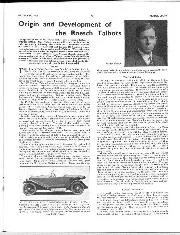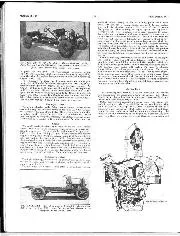

Origin and Development of the Roesch Talbots
The specialised articles on famous makes have become a feature of Motor Sport. Many Talbot cars are still giving excellent service and, particularly following the article on "Sunbeams Between the…
RACING PHOTOGRAPHS. A Valuable Suggestion for Amateur Snapshotters.
By “ONE OF THEM.”
As a frequenter of Brooklands on race days and nonrace days, I have noticed how few people who have ‘cameras with them take photos, or, if they do take them, fail to do so in the proper way. Of course, everyone knows how to take a photo of a thing at rest, but when it comes to taking a car travelling at over 100 m.p.h. it is quite another matter.
I have seen some people hold their cameras pointing directly towards the place where they want to take the car ; they hear the car roaring towards them, and snap it as soon as it appears in the view-finder, probably jerking the camera in the excitement of the moment, or opening the shutter a fraction of a second too late, so that they only get in a part of the car. .Even if the photographer is lucky enough to get the car in the picture, the car must appear blurred (unless he takes it with a shutter set to a speed of about i 4000 sec.), and the background clear. As a result, when the film is developed, he throws the photo away as a failure.
The way by which good results can be obtained is as follows :—Locate the car in the view-finder, when it is yet some distance away, and keep it in the middle by moving the camera in a horizontal plane, taking care not to tilt it. Carry the camera round thus, until the car reaches the desired spot, and then snap it.
In this way with very little practice anyone can take perfect photos of moving things. This method is illustrated by a photo of Bugatti 2 for the 1924 200 miles race, enlarged considerably, and taken with a Vest Pocket Kodak, using a stop of I /50 second. It will be noticed that the car is quite clear in outline, although it was travelling at about 70 m.p.h., and that the background is blurred. This method applies more particularly to amateurs, who only have cameras with stops ranging to about r /5o second. I am certain that this article will be of use to those amateur photographers who have hitherto experienced
difficulty in obtaining good photos at Brooklands ; for now with but little practice they may be able to obtain such results as will henceforth serve as reminders of enjoyable and perhaps thrilling afternoons at the track.
CITY OF LONDON M.C.C. (Proposed.)
It is proposed to form a club with headquarters in the City, and to organise reliability trials, social runs, and other social events. Members need not necessarily reside in or near the City. Those interested should communicate with Mr. W. England, 3, Lloyd’s Avenue, Fenchurch Street, London, E.C. I.